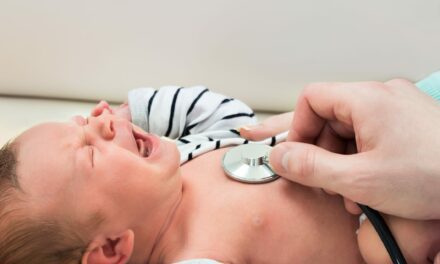A new study provides a scientific basis for establishing differences within a normal range for the respiratory rate of newborns.
The study of 953 newborns shows percentiles and individual variation in respiratory rate and outlines how sleep, meconium staining of amniotic fluid, and sex affect RR in the first 24 hours of life, report Lars Tveiten, MD, from the Department of Pediatrics, Innlandet Hospital Trust, Elverum, Norway, and the Department of Clinical Science, University of Bergen, Norway, and colleagues. Their study was published online March 30 in Pediatrics.
The median RRs were 46 breaths/minute at 2 hours and 42 to 44 breaths/minute thereafter. However, the range was wide. The 95th percentile was 65 breaths/minute at 2 hours and 58 to 60 breaths/minute thereafter. The fifth percentile was 30 to 32 breaths/minute.
On average, RRs were 5.2 breaths/minute higher when quietly awake than asleep (95% confidence interval [CI], 4.7 – 5.7, P < .001) and 3.1 breaths/minute higher after heavy meconium staining of the amniotic fluid compared with little or no staining (95% CI, 1.5 – 4.8; P < .001).
RR did not differ significantly by sex, whether the baby was born by cesarean section, or whether the baby was on the mother’s chest when observed, as opposed to a cot.









